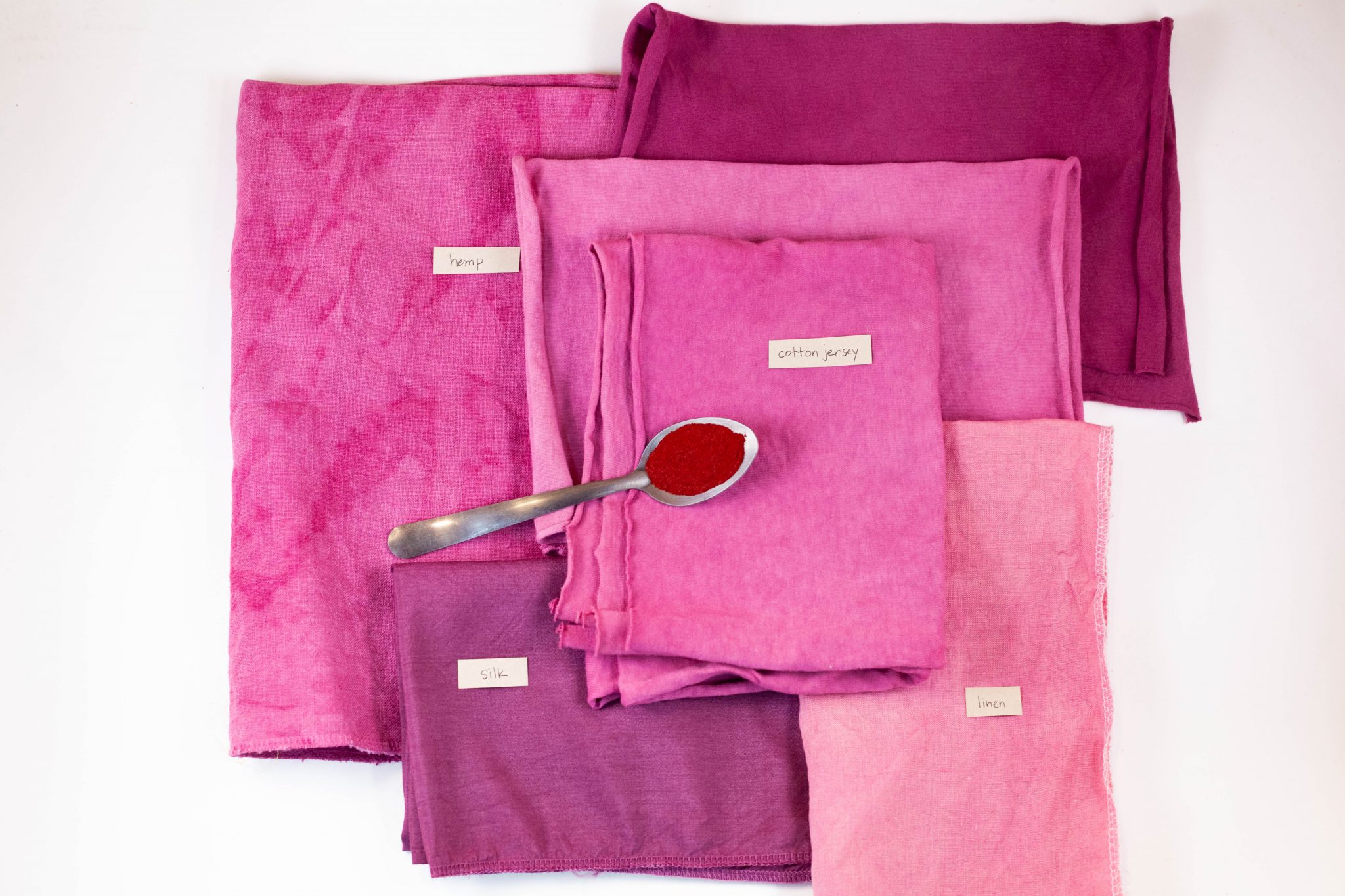
This week: Lac and our BioHue inks get lots of questions online. We get a little feedback help from Judi Pettite, founder of BioHue inks!
Every week, we are emailed with questions from our natural dye community asking simple and complex questions that we thought might be worth sharing. Of course, all of your burning questions are answered by natural dyer in chief, Kathy Hattori, Founder of Botanical Colors.
I’d love to know why and what the citric acid does. I have used lac without and wondering how it assists.
The citric acid helps precipitate any residual shellac or other insolubles and allows them to sink to the bottom of the beaker or container. These insolubles are not included in the dye bath as they cause spotting or unevenness on fabrics. We recently acquired a slightly different preparation that has less “grit” so you can try it with and without citric acid. The acid also makes the lac dye a redder, rather than more purplish shade.
Can you use lac to color cold process soap? I have not had success with getting pinks using beet powder.
Not sure if lac would be a good choice as soap making is super alkaline and it may turn the dye nearly black from the high pH levels. You might be more successful with either a pink salt or a pink clay as these are more impervious to the alkalinity of the soap mixture, but of course, the color will be very different. It is also possible that madder might be a good option to experiment with.
Would your liquid inks be good for painting on fabric/cloth(wool, cotton, linen, silk)? Do they need to be set?
(From Judi Pettite who makes BioHue inks) “All the inks adhere well on fabric. Mordanted fabric will assist in adherence though not mandatory. I would let set/cure overnight, then heat set. Always test on fabric first. Different fabrics accept liquid dyes differently depending on weave and fibers.”
Can this product be used as a natural color finish for wood? I’ve dipped a number of wood projects in the past, but some are either too large or awkward for dipping. A paintable indigo like this might provide a great alternative.
(From Judi Pettite who makes BioHue inks) “You can see some samples of indigo on wood strips on BioHue. Shake the ink jar well to disperse the pigments (the indigo ink is pigment based). Type of wood is a factor as well. Light indigo color 1 coat, med 2-3. Dark 3-5 coats. If you like the outcome, and your project requires a larger quantity, we can have a conversation with Botanical Colors about a special order for a larger jar if that’s of interest.”
How lightfast are the Biohue inks and your other colourants? Have tests been done on any of them with sun exposure?
(From Judi Pettite who makes BioHue inks) “I’ve chosen the colors for their durability. As with any artwork, keep out of direct sunlight.”
Thank you, Judi!
